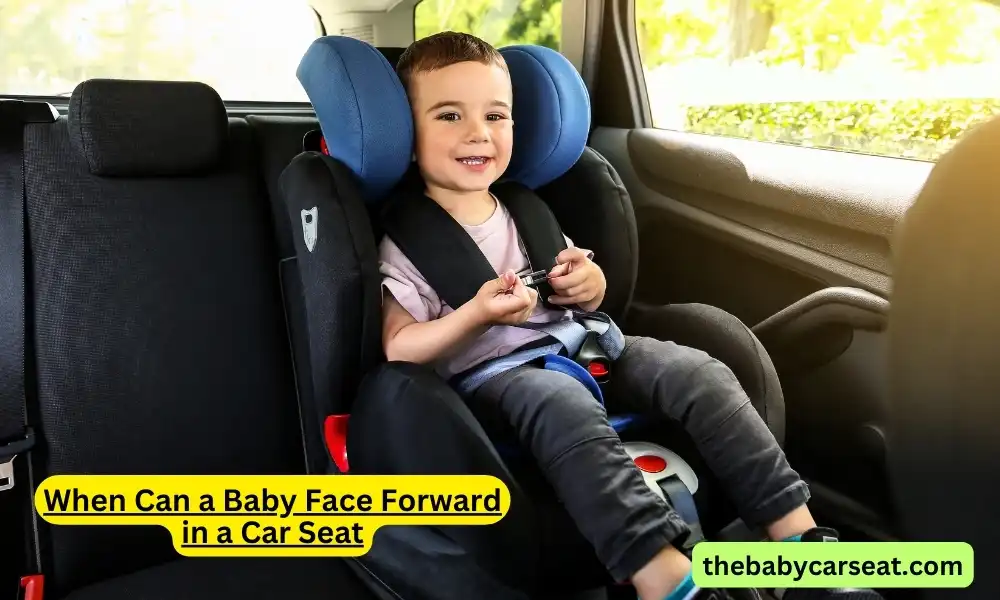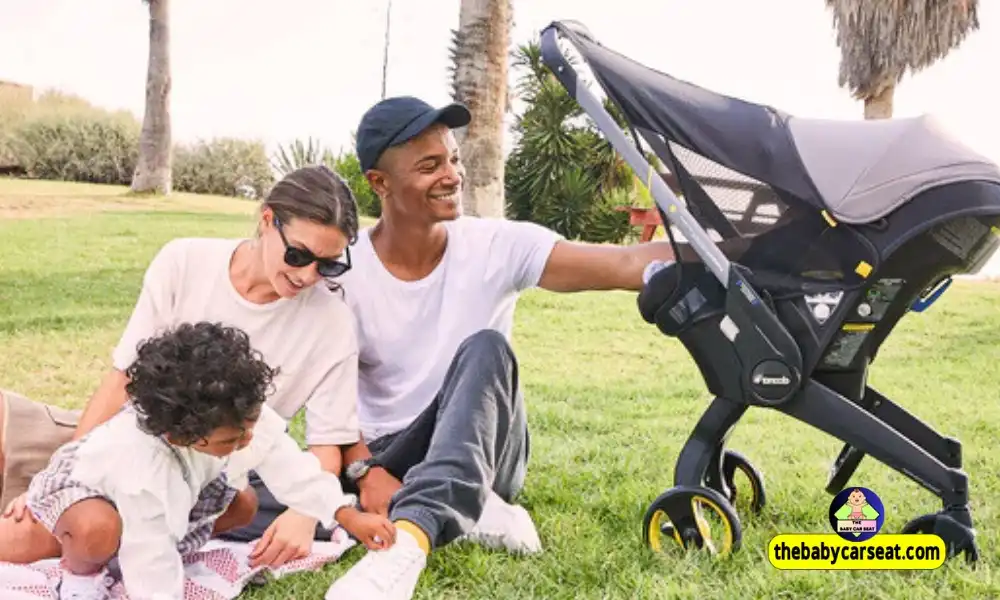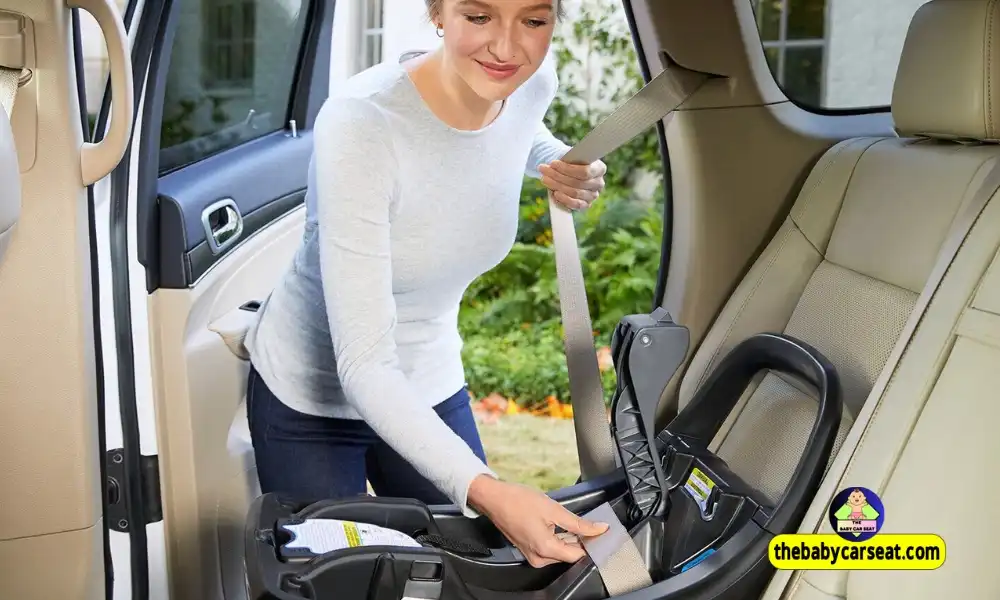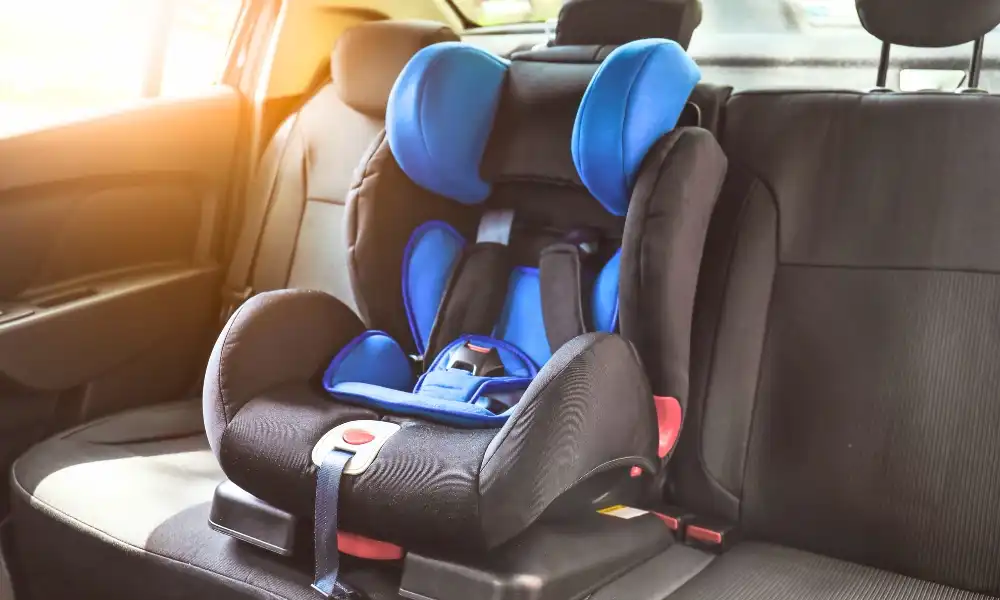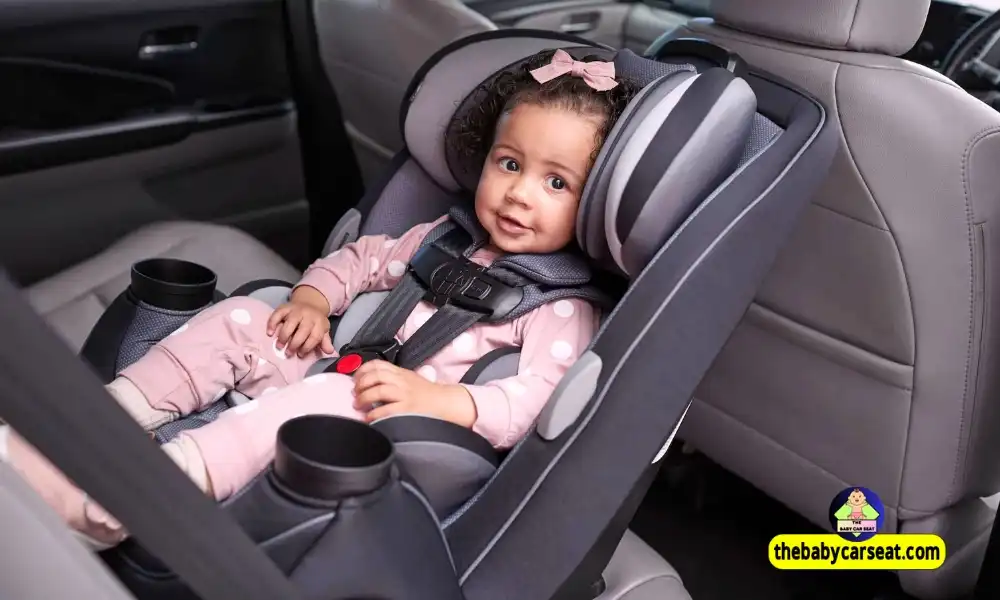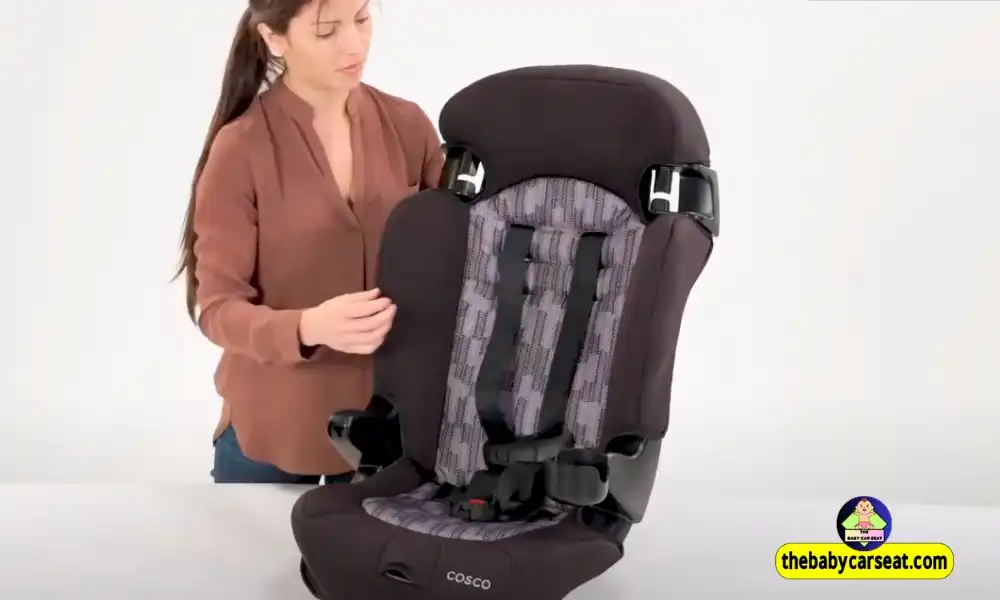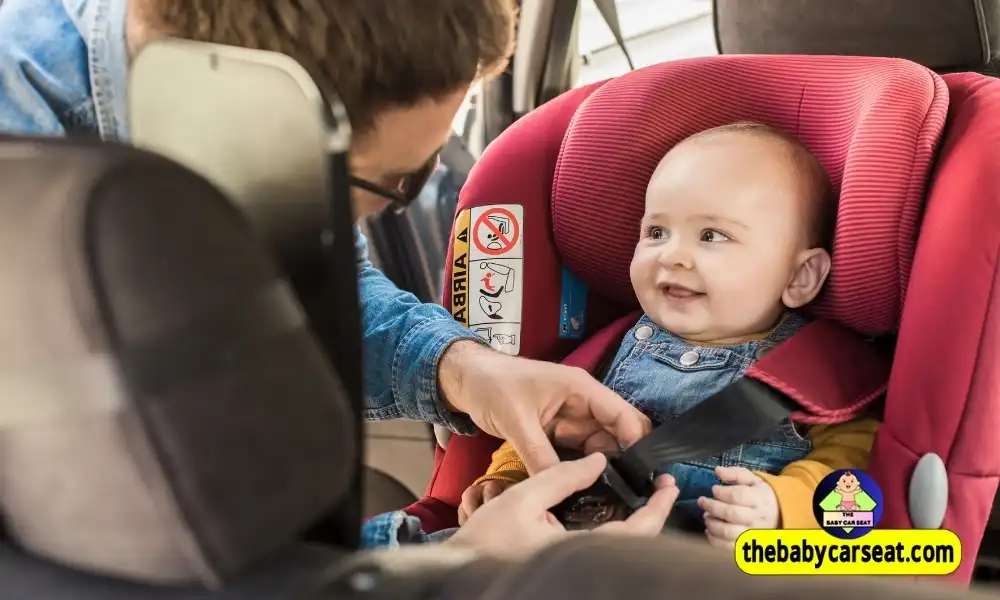When Can a Baby Face Forward in a Car Seat – At what age can a baby face forward in a car seat? The answer: typically around 2 years old or when they exceed the rear-facing weight and height limits.
Ensuring your baby’s safety in the car is crucial. One key aspect is knowing when to switch their car seat from rear-facing to forward-facing. This decision depends on age, weight, and height guidelines. Many parents feel eager to make this transition, but it’s essential to wait until it’s safe.
Rear-facing seats provide better protection for young children. In this blog post, we’ll discuss the factors that determine when your baby can safely face forward. Understanding these guidelines helps keep your little one secure on every journey. Let’s dive into the details to make an informed decision for your child’s safety.
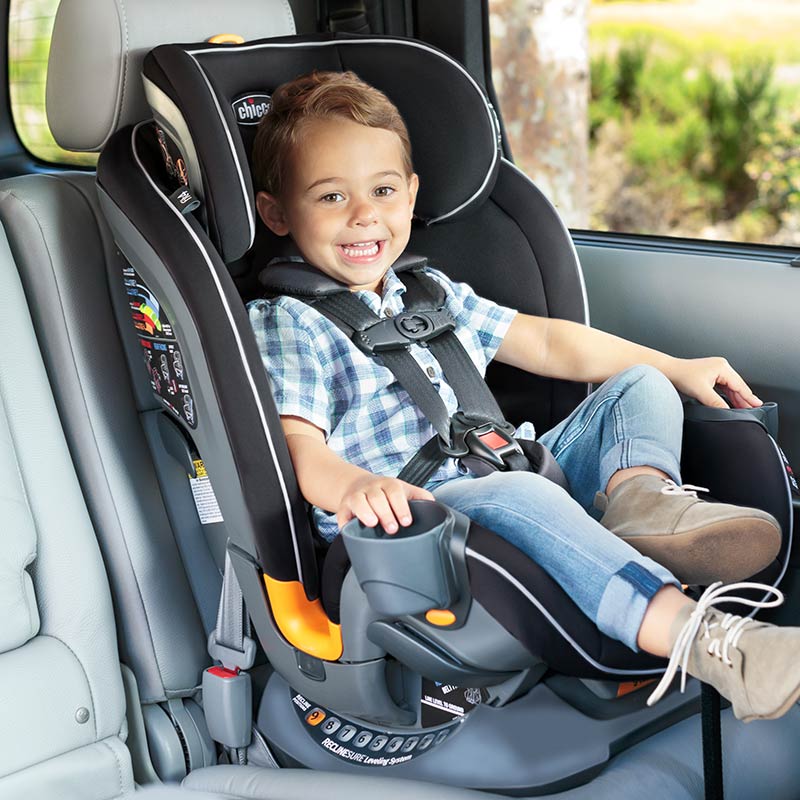
Credit: www.chiccousa.com
Legal Requirements
Ensuring your baby’s safety in a car seat is crucial. Knowing the legal requirements for car seats helps you keep your little one safe. Different regions have varying rules about when a baby can face forward in a car seat. This section will help you understand these requirements.
Age And Weight Regulations
Most countries have specific age and weight regulations for car seats. For example, in the United States, babies should remain in a rear-facing car seat until they are at least 2 years old. The American Academy of Pediatrics recommends keeping children rear-facing until they reach the maximum weight or height allowed by the car seat manufacturer.
Here is a brief summary of the general guidelines:
| Country | Minimum Age | Minimum Weight |
|---|---|---|
| United States | 2 Years | 20-30 lbs |
| Canada | 1 Year | 22 lbs |
| United Kingdom | 15 Months | 20 lbs |
Some regions may have stricter regulations, so always check local laws.
Differences By Region
Regional differences can affect when a baby can face forward in a car seat. For example, in Australia, children must stay rear-facing until they are at least 6 months old. In Sweden, children often remain rear-facing until they are 4 years old.
Here are some examples of regional differences:
- Australia: Rear-facing until 6 months old
- Sweden: Rear-facing until 4 years old
- Japan: Rear-facing until 1 year old
Always follow the guidelines for your specific region to ensure your child’s safety.
Safety Considerations
Ensuring your baby’s safety while traveling in a car is crucial. One of the key decisions is determining when your baby can face forward in a car seat. This decision impacts their well-being and safety. Below, we explore the impact of forward-facing too early and the benefits of rear-facing for your little one.
Impact Of Forward-facing Too Early
Turning your baby forward-facing too soon can be dangerous. Babies have weaker necks and spines compared to adults. During a crash, forward-facing seats do not provide the same level of protection. Babies are at higher risk of injury. The force of a collision can cause serious harm.
Studies have shown that rear-facing car seats offer better protection. Rear-facing seats distribute the force of a crash more evenly. This reduces the stress on a baby’s head, neck, and spine.
Benefits Of Rear-facing
Rear-facing car seats are designed to cradle your baby. They provide support for the head, neck, and spine. This is especially important during sudden stops or accidents. Rear-facing seats help prevent serious injuries.
The American Academy of Pediatrics recommends keeping children rear-facing until at least age 2. The longer your baby stays rear-facing, the safer they are. Some seats are designed to accommodate larger babies and toddlers. This allows for extended rear-facing use, enhancing protection.
- Enhanced Protection: Rear-facing seats distribute crash forces evenly.
- Support: Provides better support for the head, neck, and spine.
- Reduced Injury Risk: Significantly lowers the risk of serious injury.
Choosing the right car seat and positioning it correctly is crucial. Always follow the manufacturer’s guidelines. Regularly check that the seat is properly installed. This ensures maximum safety for your baby.
Guidelines By Age
Knowing when a baby can face forward in a car seat is crucial for their safety. Guidelines by age provide clear instructions. Adhering to these guidelines ensures your child is protected during every car ride.
Infants
Infants should always ride in a rear-facing car seat. This position provides the best support for their developing neck and spine. The American Academy of Pediatrics recommends keeping infants rear-facing until at least age 2. The car seat should be installed at a 45-degree angle. This angle prevents the baby’s head from flopping forward, which could restrict their airway.
Toddlers
Toddlers can continue to ride rear-facing until they reach the maximum weight or height limit of their car seat. Most convertible car seats can accommodate children rear-facing up to 40 pounds. Once your child outgrows the rear-facing seat, they can transition to a forward-facing seat with a harness. Keep them in this position for as long as possible. The harness provides better protection in case of a crash.
Preschoolers
Preschoolers should use a forward-facing car seat with a harness until they outgrow it. After that, they can move to a booster seat. The booster seat ensures that the car’s seat belt fits properly. The lap belt should lie snugly across the upper thighs, not the stomach. The shoulder belt should lie snug across the shoulder and chest, not the neck or face. Children should remain in a booster seat until they are at least 4 feet 9 inches tall.
| Age Group | Seat Type | Position |
|---|---|---|
| Infants | Rear-facing car seat | Rear-facing |
| Toddlers | Convertible car seat | Rear-facing to Forward-facing |
| Preschoolers | Booster seat | Forward-facing |
Signs Your Baby Is Ready
Parents often wonder when it’s safe to turn their baby’s car seat forward. Ensuring your child’s safety is paramount. Recognizing the signs your baby is ready to face forward in a car seat can make this transition smoother. Here, we discuss the physical and behavioral indicators to look out for.
Physical Development
Babies grow at different rates, but there are common physical milestones that signal readiness for a forward-facing car seat.
- Neck Strength: Your baby should have strong neck muscles. They need to hold their head up without support.
- Height and Weight: Check your car seat’s manual. Ensure your baby meets the minimum height and weight requirements.
- Age: Most guidelines suggest waiting until your baby is at least 2 years old.
Behavioral Indicators
Aside from physical growth, certain behaviors also suggest your baby might be ready for a forward-facing seat.
- Sitting for Long Periods: If your baby can sit upright for longer periods, they might be ready.
- Interest in Surroundings: Babies who show interest in looking around may benefit from facing forward.
- Stability in Movements: Your baby should move with stability. They should control their body movements well.
Monitoring these signs can help you determine the right time to switch your baby’s car seat. Always prioritize safety and follow car seat guidelines.
Choosing The Right Car Seat
Choosing the right car seat for your baby is crucial. It ensures their safety during travel. Parents must understand the different types of car seats available. Each type has unique features designed for various stages of a child’s growth. Understanding these can help make the right choice.
Types Of Car Seats
There are several types of car seats designed for different age groups and weights:
- Infant Car Seats: These are for newborns and small babies. They are rear-facing and offer maximum protection.
- Convertible Car Seats: These can be used both rear-facing and forward-facing. They are suitable for infants and older children.
- All-in-One Car Seats: These can transition from rear-facing to forward-facing to booster seats. They are versatile and economical in the long run.
- Booster Seats: These are for older children who have outgrown the forward-facing car seat. They help position the seat belt correctly.
Features To Look For
When choosing a car seat, consider these important features:
- Safety Standards: Ensure the car seat meets all safety regulations.
- Ease of Installation: Look for car seats that are easy to install. Incorrect installation can compromise safety.
- Adjustability: Check if the seat can be adjusted as your child grows. This includes harness height and seat recline.
- Comfort: Ensure the seat has adequate padding and support. Long trips can be uncomfortable without proper cushioning.
- Durability: Choose a seat made from high-quality materials. It should withstand wear and tear.
Choosing the right car seat involves careful consideration. Prioritize safety and comfort above all else. This ensures your child is protected and comfortable during travel.

Credit: www.lafundacion.com
Installation Tips
Ensuring your baby’s car seat is installed correctly is crucial for their safety. Proper installation maximizes protection and minimizes injury risks. Follow these tips for a secure and safe journey.
Correct Positioning
Always place the car seat in the back seat. The middle seat is the safest spot. Ensure the car seat is facing the correct direction. Babies should face the rear until they are at least two years old or reach the car seat’s maximum weight and height limits.
Use the car seat’s recline angle indicator to ensure the seat is at the correct angle. A too-upright car seat can cause your baby’s head to fall forward, restricting airflow.
Securing The Car Seat
There are two main methods to secure a car seat: using the seat belt or the LATCH system. Choose one method, not both.
- Seat Belt: Thread the seat belt through the car seat’s belt path. Buckle the seat belt and lock it to prevent it from loosening.
- LATCH System: Locate the lower anchors in your vehicle seat. Attach the car seat’s lower anchor connectors to the vehicle’s lower anchors. Tighten the straps to secure the car seat firmly.
Ensure the car seat does not move more than one inch side-to-side or front-to-back. A secure car seat provides the best protection for your baby.
Common Mistakes To Avoid
Ensuring your baby’s safety in the car is crucial. Common mistakes can compromise their protection. Understanding these errors will help keep your child safe.
Incorrect Installation
Incorrect installation of a car seat is a frequent mistake. It can put your baby at risk. Always follow the manufacturer’s instructions. Make sure the car seat is securely attached. The seat should not move more than an inch side-to-side. Refer to your vehicle’s manual for specific guidelines. Many parents forget to use the tether strap. Use it for forward-facing car seats to prevent seat rotation. Check the angle of the car seat. It should be reclined according to the guidelines.
Here are some key points to remember:
- Follow manufacturer’s instructions
- Securely attach the car seat
- Use the tether strap
- Check the seat angle
Using An Expired Car Seat
Using an expired car seat is another common mistake. Car seats have expiration dates. These dates ensure the materials remain strong and safe. Check the label on your car seat. It usually states the expiration date. Do not use a car seat past this date. Materials can degrade over time. This makes the seat less effective in a crash. Always register your car seat. This way, you receive safety updates and recall information.
Steps to avoid using an expired car seat:
- Check the expiration date on the label
- Do not use car seats past their expiration
- Register your car seat for updates
By avoiding these common mistakes, you ensure your baby’s safety on the road. Proper installation and using a valid car seat are key steps.

Credit: www.evenflo.com
Frequently Asked Questions about When Can a Baby Face Forward in a Car Seat
When Can A Baby Face Forward In A Car Seat?
A baby can face forward in a car seat after turning 2 years old. Always check the car seat manufacturer’s guidelines for specific weight and height requirements.
Is It Safe For A Baby To Face Forward?
It is generally safer for babies to remain rear-facing as long as possible. Rear-facing car seats provide better protection for their head, neck, and spine.
What Are The Risks Of Forward-facing Too Early?
Forward-facing too early increases the risk of severe injuries in a crash. Babies have less neck and spine support when facing forward.
Can A 1-year-old Face Forward In A Car Seat?
Most experts recommend keeping a 1-year-old rear-facing. Follow the car seat manufacturer’s guidelines for weight and height before switching to forward-facing.
Conclusion
Ensuring your baby faces forward at the right time is crucial. Follow guidelines from safety experts and pediatricians. Typically, babies can face forward after two years. Always check your car seat’s manual. Proper use of car seats saves lives. Make informed decisions for your child’s safety.
Stay updated with current safety recommendations. Your child’s well-being is the top priority. Ensure every car ride is secure and comfortable. Remember, safety first, always.

